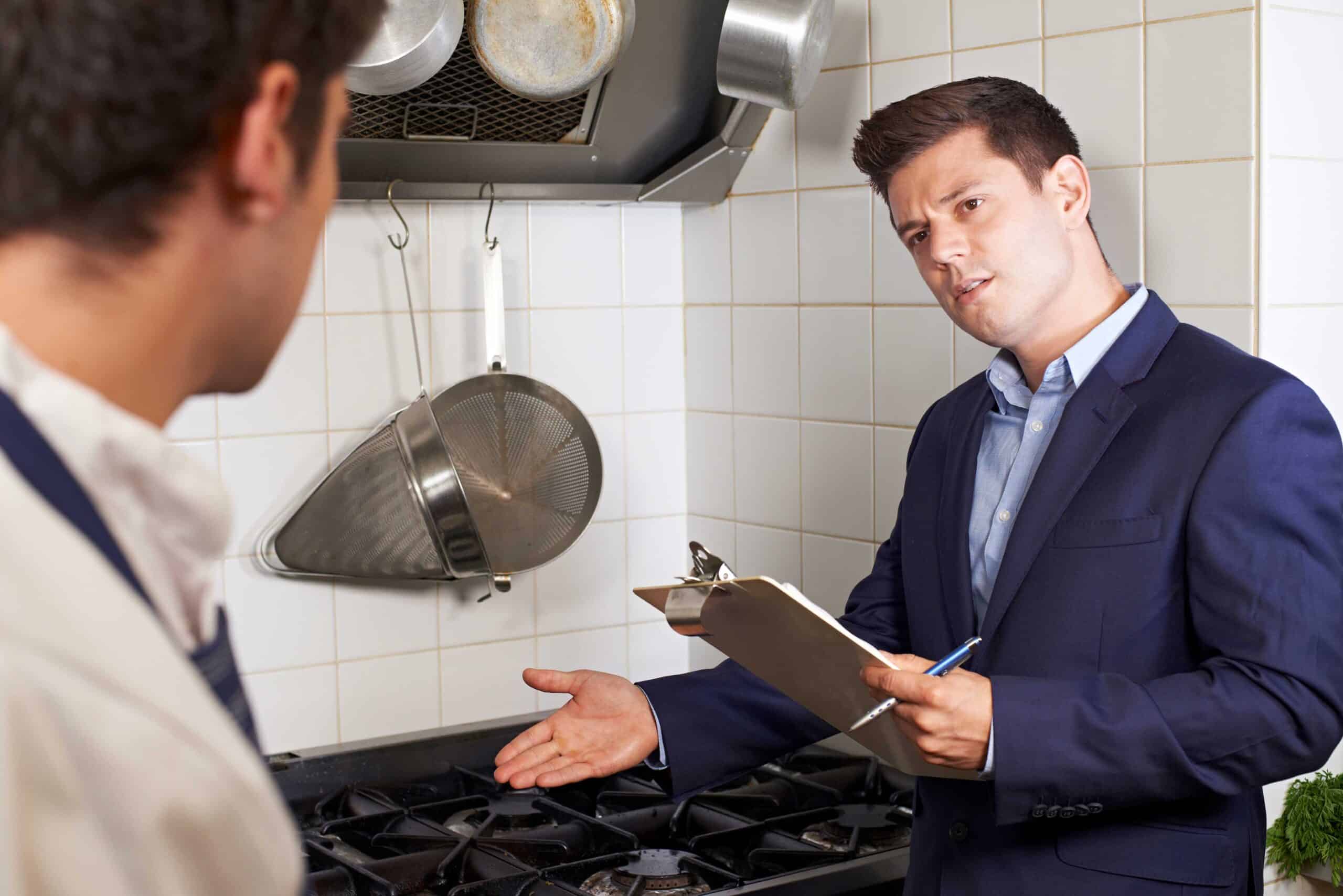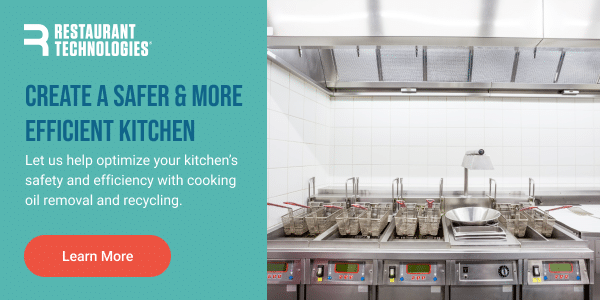
Updated March 18, 2024
The hustle and bustle of restaurants is a double-edged sword: as lively and entertaining as it can be, it’s also dangerous. There’s a risk around every corner, and accidents are bound to happen. While restaurants tend to experience a relatively high frequency of low-severity accidents, such as slips and falls, these incidents can still harm both your employees’ well-being and your bottom line.
Combining the very nature of the work with the seemingly revolving door of restaurant workers and establishments that are ill-prepared for safety can create a recipe for disaster. The good news is that managers can adopt safer practices today to mitigate the inherent risk of running a restaurant. How? We’ll walk you through some commonly asked questions and restaurant safety tips so you can protect your workers and keep everything flowing smoothly.
How Do I Establish an Effective Injury and Illness Prevention Program?
Restaurants carry a dual responsibility: to protect their staff from potential harm and to provide a safe dining experience for patrons.
Not only is proper planning a crucial step in creating this safer work environment, but it’s also an obligation under regulatory bodies such as the Occupational Safety and Health Administration (OSHA). To be effective, your restaurant’s prevention program should:
- Involve all employees, including supervisors and managers
- Identify specific workplace hazards and high-risk areas
- Implement the tools, training, and other changes to correct these hazards
With clear, formal safety policies in place, employees can better understand what is expected of them—contributing towards a safe work environment, and ultimately, a safe restaurant.
How Do I Ensure Everyone Upholds a Safe Working Environment?
Creating a safer workplace goes beyond merely complying with regulations. It involves building a safety-conscious culture—one where every team member is both aware of the risks and feels empowered to take action and prevent accidents. Ideal commercial kitchen safety begins with the proper training of restaurant employees and establishing a culture of safety.

Building such a safety-aware culture involves:
- Encouraging open communication about concerns between staff and management
- Recognizing and even rewarding staff for proactive safety measures
- Regularly reviewing and updating safety protocols as the restaurant grows and changes
In many cases, injuries are preventable—but workers, especially younger or newer hires, might not feel confident enough to ask questions or point out potentially unsafe situations. Establishing an atmosphere of openness and honesty can go a long way in reducing the risk of incidents.
What Are the Most Common Restaurant Injuries and Their Causes?
For FOH and BOH employees, awareness is an important step toward creating a safer workplace. By identifying common injuries and their causes, restaurants can better prepare to handle and actively prevent such accidents from happening.
Some of the most common restaurant injuries include:
- Cuts, lacerations, and punctures – According to the National Restaurant Association, cuts and lacerations account for roughly 22% of food service injuries. Most of these types of accidents occur when using knives for peeling, dicing, mincing, and slicing. Broken dishes and powered tools—such as blenders and meat grinders—can also pose a safety threat.
- Sprains, strains, and overexertion – Swanson, vice president of customer experience for Restaurant Technologies, noted that lifting 35-pound jugs of frying oil is often the culprit of back injury, and Restaurant Technologies’ research shows sprains and strains on average are the most expensive. These lifting-related claims can average around $156,993 if they result in a permanent disability.
- Burns and scalds – Approximately 13% of food industry accidents are burns or scalds. Though these account for the least amount of incidents annually, they can lead to long-lasting or fatal injuries that put your employees at serious risk. The majority of burns in the kitchen are caused by cooking oil, steam, hot surfaces, and hot objects such as pans. Train your staff on how to prevent burns in the kitchen to promote safety.
- Slips, trips, and falls – Though slips and trips can happen anywhere, they are particularly prevalent in the restaurant industry and lead to approximately 20% of workplace injuries. From uneven floors and unexpected tripping hazards to spilled beverages and greasy floors, there are a variety of reasons why these accidents are so common in food service.
How Can I Prevent Slips, Trips, and Falls?
This markedly common workplace hazard is also relatively easy to protect your employees against. It only takes a few thoughtful preventative measures to mitigate the everyday risk of slipping or falling.
Here’s how to mitigate or prevent kitchen falls:
- Require all employees to wear slip-resistant shoes or coverings. Make sure your team is regularly replacing their old pairs as the grip wears down over time, especially when they’re wearing the same pair every shift.
- Ensure areas with a high slipping risk (such as near sinks or fryers) are properly outfitted with high-friction surfaces or mats from the start. All rugs, carpets, and mats should also be properly secured, even in low-traffic or low-risk areas.
- Use all appropriate safety signage, including “slippery when wet” signs. Train your employees to do so promptly and consistently as soon as they notice a potential slipping hazard.
- Clean spills and splashes immediately, in both the front and back of house. Mopping up water, cocktails, sauce, and especially grease or oil should be top priorities for your team. Providing employees with clear restaurant cleaning procedures can prevent slips and falls.
- Ensure that all walkways are well-lit and clutter-free. Regularly inspect lighting fixtures, especially in dim hallways or dining rooms to ensure both employees and patrons can navigate safely, and with ease. At the same time, check that emergency lighting is fully functional in case of an emergency blackout.
Since falls are one of the more common causes of fatalities in restaurant workplace accidents, extra attention should be given to this area.
What Are Some Other Preventative Safety Measures?
Prevention can mean the difference between a safe and efficient workplace and a costly or unpredictable accident. Investing in safety features is another way to prevent accidents throughout your business.
Establish Safe Cleaning Policies
Restaurant cleanup is an essential task every day, so it can be easy for workers to grow complacent. But these activities also expose them to a variety of potential dangers, such as chemical cleaners, sharp utensils, and kitchen machinery.
Ensure that cleaning tasks are performed safely by promoting best practices such as:
- Waiting for hot equipment to fully cool before cleaning
- Use personal protective equipment, especially when working with chemical cleaners
- Avoid mixing chemicals or using unlabeled cleaning bottles
- Verify that all machinery is unplugged before cleaning
Having safety data sheets on hand ensures your restaurant’s cleaning practices are properly followed. Emergency eyewash should also be readily available in case of accidental chemical exposure from splashes or vapors.
Verify Cold Storage Safety
Meat coolers, walk-in freezers, and similar cold storage areas bring multiple risks to employees. The door could accidentally close behind them, leaving workers trapped and exposed to extreme temperatures. Condensation and leaks can quickly freeze into slipping hazards. Continuous work for long periods in frigid conditions can lead to cold stress.
Restaurants can take preventive steps to ensure these risks are mitigated. A means of exit should always be in place inside walk-in freezers, accompanied by a light, ax, and heated door seal for emergencies.
Employees working in cold storage environments should always be outfitted with warm clothing and personal protective equipment, especially non-slip shoes. Regular maintenance can also go a long way in preventing the buildup of ice on floors and other surfaces.
How Can I Train My Staff on Safety Protocol?
Treat safety conversations with the same care and gravity as you discuss labor, food costs, turnover, or sales. Properly trained kitchen staff will follow safety procedures to avoid serving raw meat or overripe, perishable food, preventing foodborne illness from affecting your customers, in addition to properly handling sharp knives, hot pans, or other harmful tools that could hurt a fellow staff member. Provide thorough and ongoing training to reinforce restaurant safety compliance.
In practice, this may involve:
- Engaging employees from day one – By introducing safety protocols as part of the onboarding process for new hires, you set the tone for the importance of safe operations within the restaurant.
- Implementing a safety committee – A committee formed of representatives from different areas of the restaurant, including both FOH and BOH staff, can keep employees involved and empowered. The committee should meet regularly to review safety practices, discuss incidents or near-misses, and propose improvements.
- Providing clear communication and resources – Ensure that all safety information, such as manuals, emergency exit routes, and hazard notices are easily accessible to all team members. Digital resources can be used to keep staff informed about relevant safety regulations, emphasizing the legal and health implications of restaurant work.
By implementing these and other strategies, restaurants can ensure full employee involvement in their safety program, creating a safer and more cohesive working environment for all. Take the initiative and further train your staff in how to avoid food waste in restaurants to reduce costs and have a more sustainable business.
What Kitchen Fire Safety Measures Should I Incorporate?
From open flames and cooking oils to cleaning chemicals and electrical connections, a devastating blow is only a spark away. Though restaurant fire safety is an involved process, you can reduce the chances of an incident by training your staff to:
- Find and use a fire extinguisher effectively
- Always clean up grease, including in exhaust hoods
- Never throw water onto a grease fire
- Properly store flammable liquids and materials
- Use and store chemical solutions properly
How Can I Reduce the Risk of Human Error? With Restaurant Technologies
Even with proper preparation and training, human error is still a factor in accidents and injuries in restaurants. However, innovative technology can remove this risk altogether. Investing in the right equipment and automation can help you avoid injuries altogether by taking labor out of the equation when it comes to particularly risky tasks. Research other restaurant kitchen efficiency tips to create a safer environment for your employees.
Cooking oil is perhaps the most dangerous material in any kitchen, and it can lead to a variety of severe injuries, especially slips and burns. That’s why Restaurant Technologies developed a suite of tools and services designed to remove the common risks associated with fryers and oil. From automatic grease cleaning to hands-free oil disposal, we have a range of solutions that can simplify daily tasks while reducing safety threats in your business.
Contact us today to discover the safety of an automated frying oil system.
Sources:
- Department of Industrial Relations. Workplace Safety & Health Guideline. https://www.dir.ca.gov/dosh/dosh_publications/Rsg.pdf
- FDA. HACCP Principles & Application Guidelines. https://www.fda.gov/food/hazard-analysis-critical-control-point-haccp/haccp-principles-application-guidelines
OSHA. Young Worker Safety in Restaurants. https://www.osha.gov/etools/young-workers-restaurant-safety/general